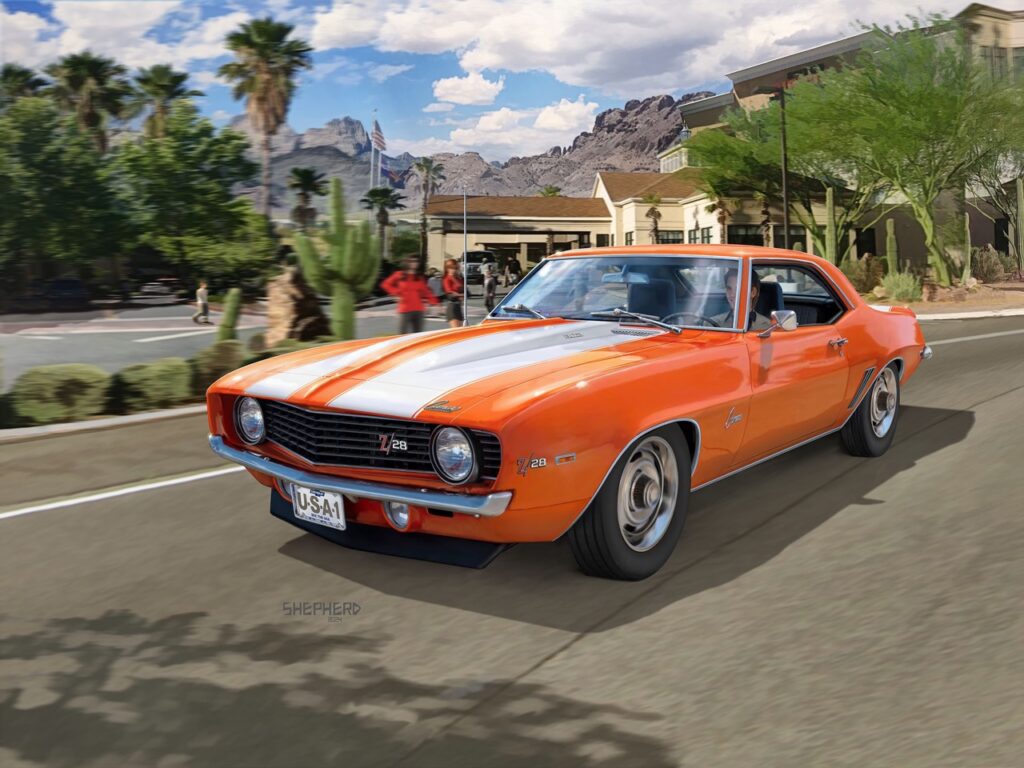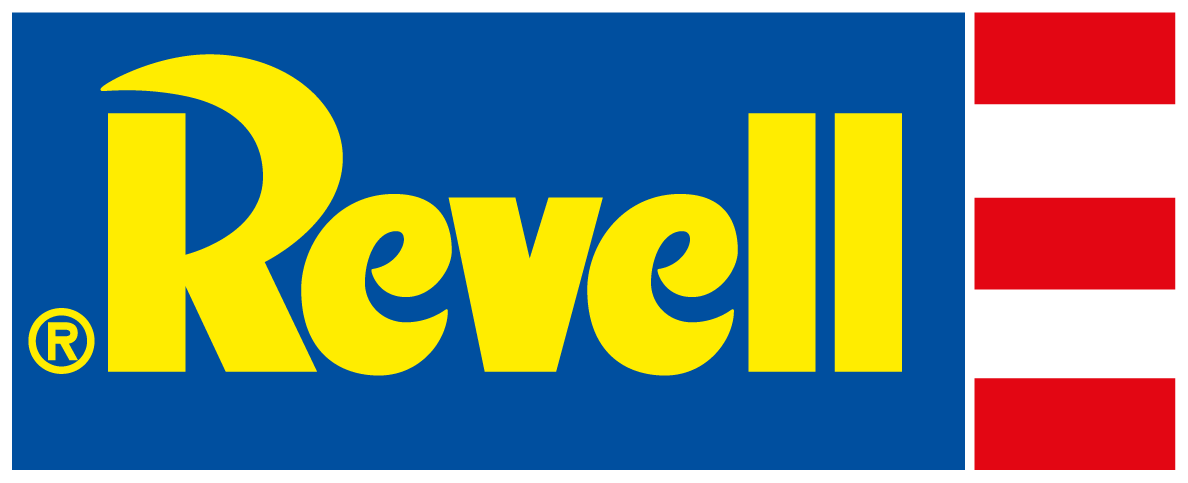The 1969 Chevrolet Camaro Z/28 (Revell Shop Link) is not just a car – it’s a piece of American automotive history that continues to inspire enthusiasts worldwide to this day. For model builders, this iconic vehicle offers a fascinating template that combines both technical sophistication and historical significance. Let’s dive into the history of this special muscle car, which in its purest form embodies the essence of American automotive culture.
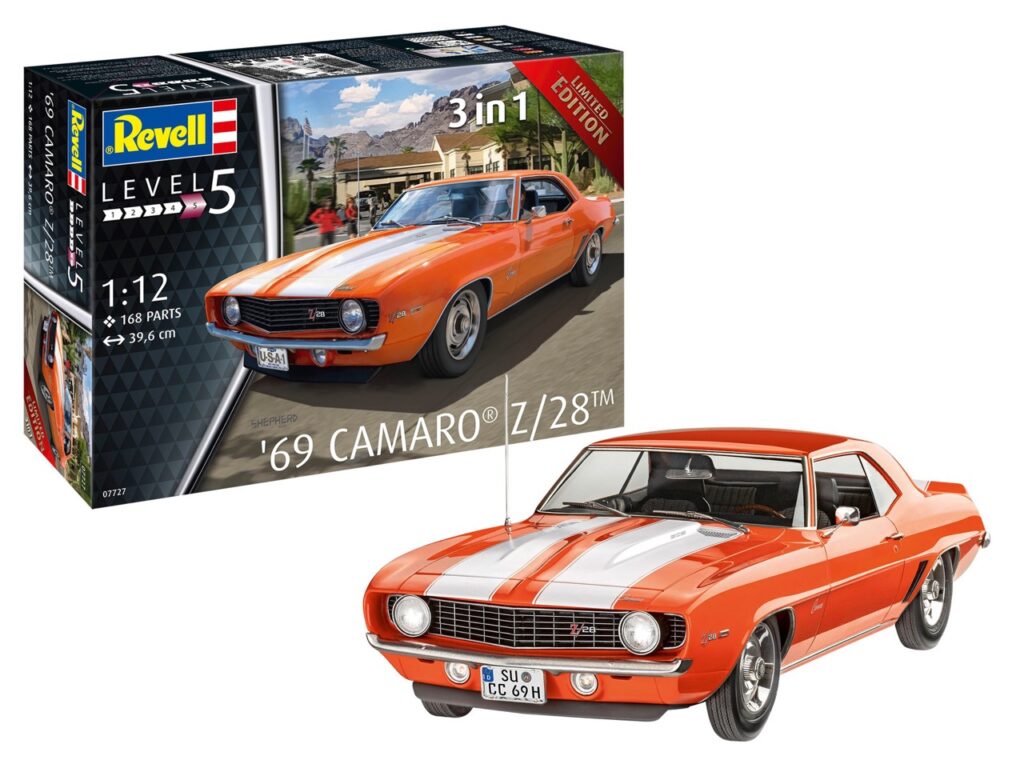 The Birth of a Legend
The Birth of a Legend
The Z/28 was originally conceived in 1966 as a response to the dominance of the Ford Mustang. Vince Piggins, an assistant at the Chevrolet engineering office, promised officials of the Sports Car Club of America (SCCA) that Chevrolet would develop an entry for the Trans-Am racing series in 1967. In August 1966, executives approved Piggins’ plan to build an SCCA-compliant factory race car based on the Camaro.
What many don’t know: The Z/28 was initially not found in any sales brochure and remained unknown to most buyers. Only after two years of racing operations and numerous road tests in trade magazines did Chevrolet marketing begin to support the Z/28 and raise awareness among dealers nationwide.
Technical Features of the Camaro Z28
The Z/28 was equipped with a high-performance small-block V8 engine with 302 cubic inches (4.9 liters), specifically developed for competition in the 5-liter class of the then-popular Trans-Am racing series. The official power rating was 290 hp at 5,800 rpm – a deliberate understatement to keep insurance premiums low. Dynamometer tests, however, showed an actual output of nearly 400 hp, making the official figures a farce 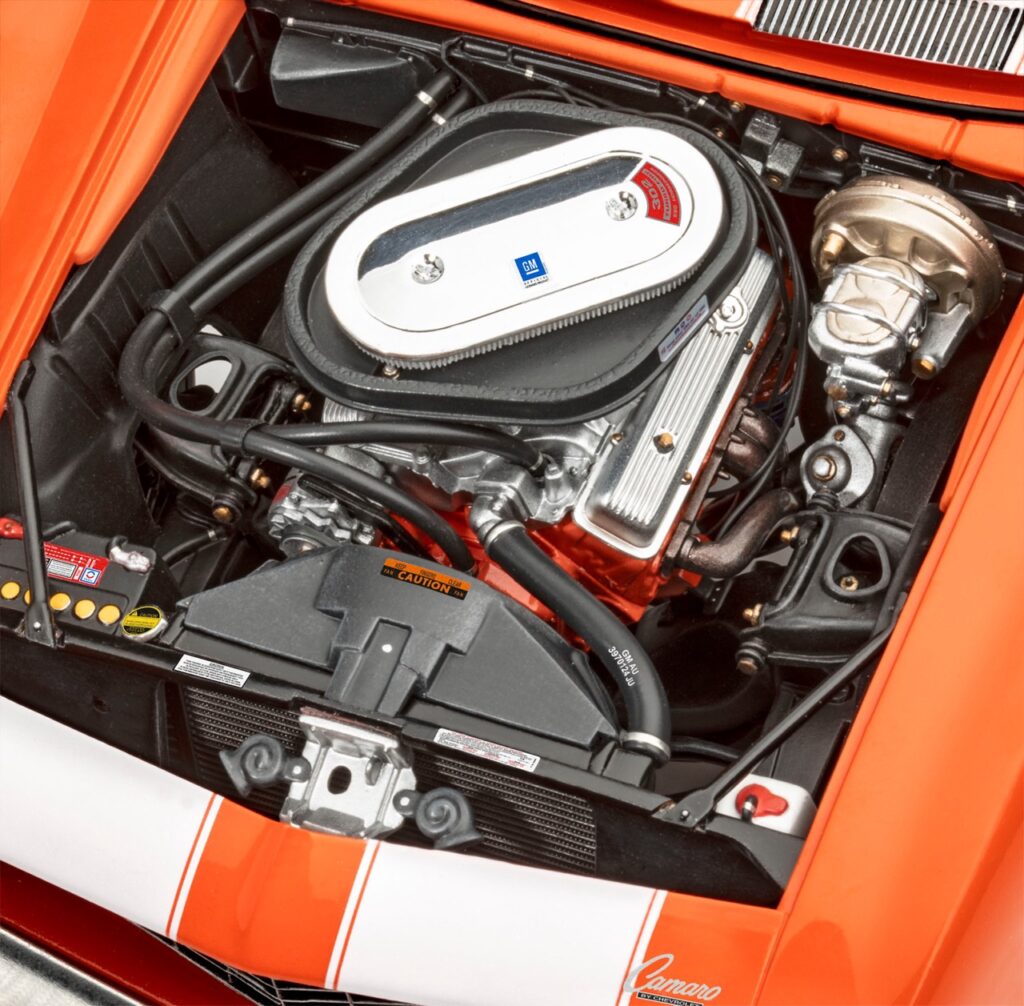
Particularly noteworthy was the combination of the 4-inch bore of the 327 engine and the 3-inch stroke of the 283 engine, which resulted in an ideal displacement of 302.4 cubic inches, staying below the SCCA upper limit of 305 cubic inches. This configuration was already known and proven among racers.
The 1969 Z/28 featured:
- A 302 cubic inch V8 engine with solid lifters
- A 780-cfm four-barrel carburetor system
- A special suspension with E70X15 tires on 7-inch wide rims
- Quicker-responding steering
- Dual rally stripes
- Standard front disc brakes
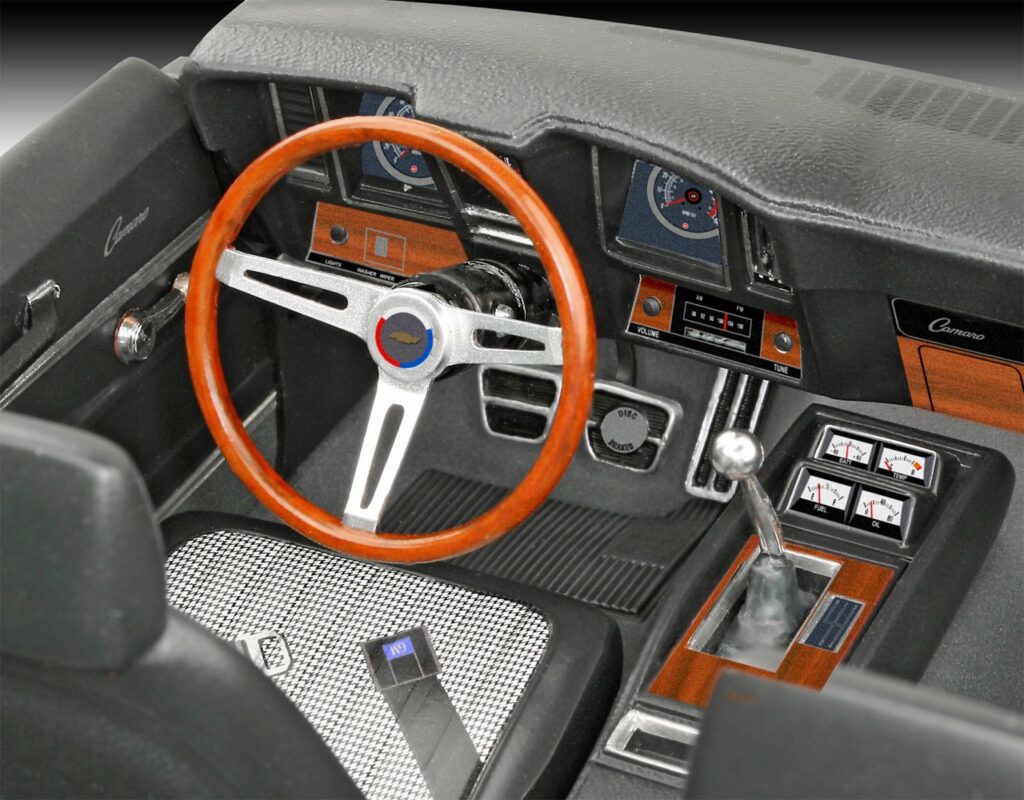
For an additional $500, you could even get two 600-cfm Holley carburetors on a cross-ram intake manifold, without changing the official horsepower rating. Another functional option, available only for the 1969 Z/28, was the $79 hood scoop that opened at 80% throttle to draw cool air from the windshield base.
Racing Successes and Records
The Z/28 gained its fame primarily on the racetrack. The Penske team with Mark Donahue at the wheel dominated the Trans-Am series and secured the championship in 1968 and 1969, clearly beating Ford. These successes cemented the Z/28’s reputation as a serious competitor on the racetrack.
In terms of handling, the Z/28 was razor-sharp, supported by power steering that both responded quickly and provided a good feel for the surface. Four-barrel Z/28s could cover the quarter mile in 14.8 seconds at 101 mph. However, the lack of torque in the lower rpm range was noticeable with the dual carburetor, which excelled at high revs.
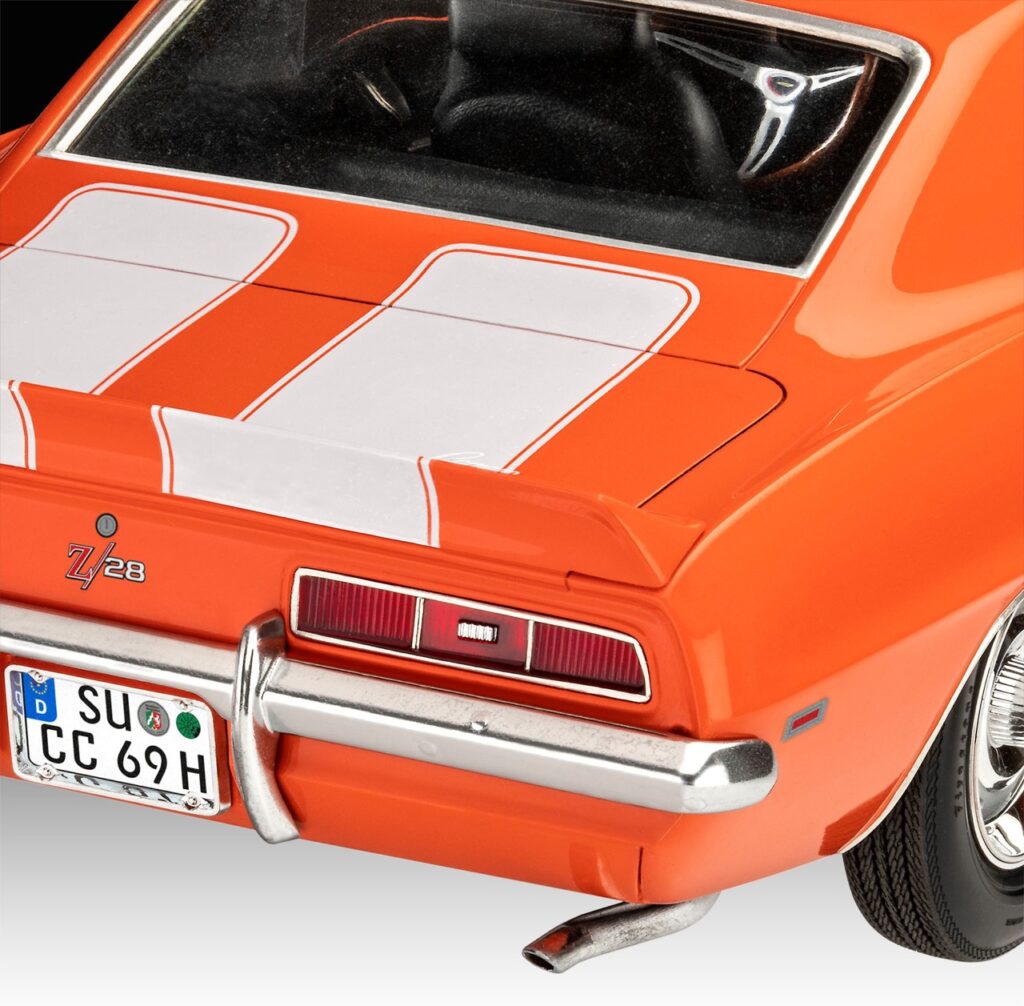
Casey Miles, a 72-year-old enthusiast, still drives his original 1969 Z/28, which he bought in 1971, in drag races and has set several quarter-mile records with it. His Z/28 is street legal but features a Jerico 4-speed transmission, a new rear axle, and a 5.57:1 gear ratio, as well as necessary safety features such as electronic shutdown and a full roll cage.
Production Numbers and Collector Value
The Z/28 reached its peak in 1969. Sales figures reflected its growing popularity: While about 7,199 units were sold in 1968, this number rose to an impressive 19,014 units in the extended sales year of 1969 – a record that was only broken in 1978 with 54,907 units sold.
In total, 243,095 Camaros were produced in the 1969 model year (including the overflow into 1970), of which 230,779 were destined for the domestic market. The Z/28 accounted for about 8% of total production.
The Z/28 in Film and Television
The Camaro has secured its place in pop culture through numerous appearances in films and television series:
In “2 Fast 2 Furious,” a blue 1969 Yenko Camaro excited car and film fans alike. The vehicle symbolizes style, speed, and street racing, and impresses with its wonderful V8 sound
In the “Transformers” film series, the Camaro plays a central role as Bumblebee. While many know him as a 2010 Camaro SS, his story began in the first film in 2007 as a worn-out yellow 1977 Chevrolet Camaro. In later installments, various concept cars and prototypes were used, symbolizing the evolution of the character.
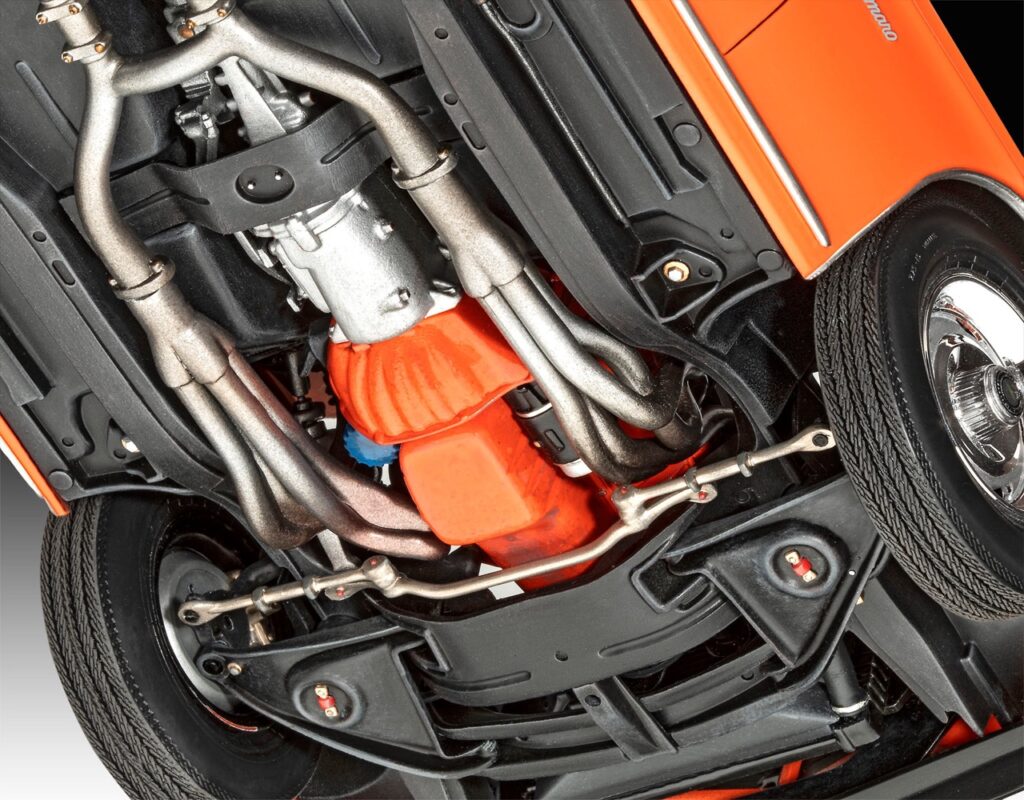
In the Nicolas Cage film Gone in 60 seconds, a 1969 Chevrolet Camaro Z/28 named “Erin” is on the list of vehicles to be stolen.
Frederick Martinez, known as “SUNOCO Fred,” has owned a 1969 Chevrolet Camaro Z/28 for about 17 years. His vehicle is a tribute to Mark Donahue’s Penske Camaro from the Trans-Am series of the 60s and 70s. He had the car restored in 2009 and converted it into a modern version of an old race car, called “SUNOCO TWIST”. It is equipped with a GM LS2 crate engine, a T56 transmission, and a 12-bolt rear axle with 4.11:1 gearing, delivering about 500 hp to the rear wheels while still achieving 28 miles per gallon, which is approximately 8.5 liters per 100 kilometers.
The Z/28 as a Model Building Project
For model building enthusiasts, the 1969 Chevrolet Camaro Z/28 offers a fascinating project that combines technical challenges with historical significance. The distinctive lines, aggressive stance, and iconic rally stripes make it a visually impressive model, while the technical details such as the V8 engine, suspension, and interior provide ample opportunity to demonstrate craftsmanship.
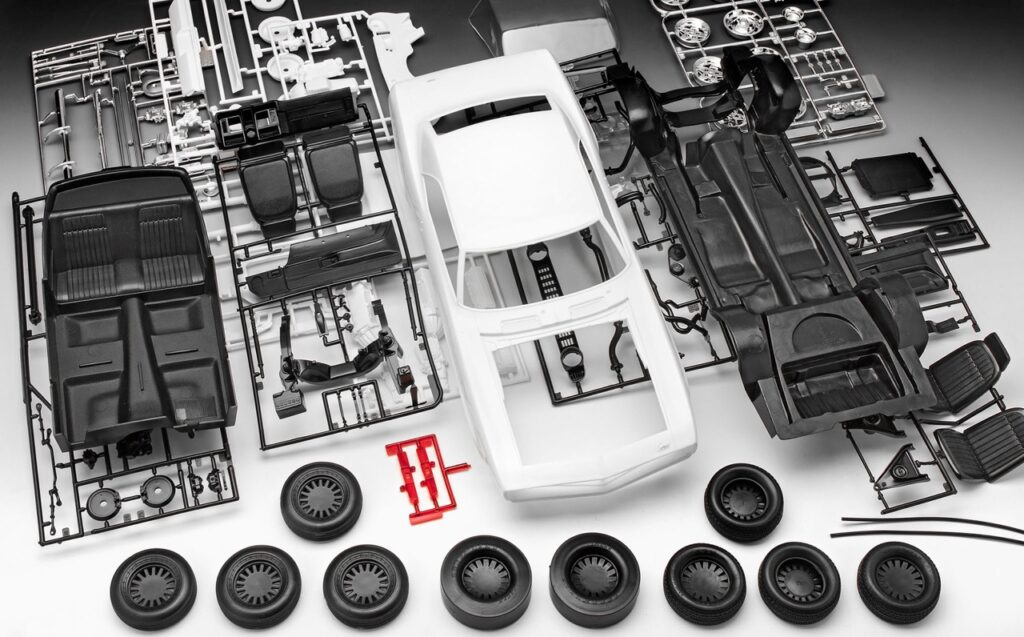
Those who want to take on the challenge of building their own miniature Z/28 will find a detailed kit at Revell that does justice to the original. The 1:12 scale kit consists of 168 precisely crafted parts and offers an impressive model of this American classic with a length of 39.6 cm, a width of 15.3 cm, and a height of 10.8 cm.
Particularly noteworthy is the multi-part V8 engine, which reflects the technical sophistication of the original, as well as the option to choose between the classic Z/28 variant and a racing version. The extensive decal set with authentic US license plates further enhances the realism of the model.
For anyone who wants to add this piece of automotive history to their collection, the kit is available at https://revell.de/shop/product/077279090-69-camaro-r-z-28tm.
